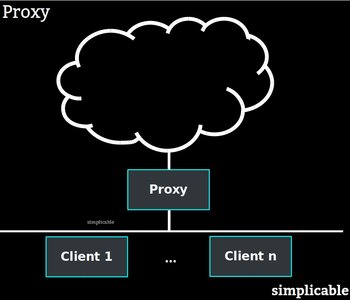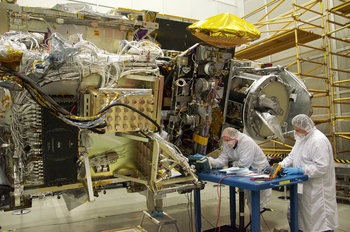
Location
Network traffic is always slower than the speed of light. As such, the geographical distance between a client and server is a significant factor in latency. For example, it often takes about 150 milliseconds for a request to travel from Australia to the United States whereas a request between two cities in Japan might take 10 milliseconds. For this reason, it is common for software services to be offered from geographically distributed data centers using a technique known as edge computing. If the server you are connecting to is far away from your present location, high latency may be unavoidable.Transmission Speed
The speed at which a networking connection moves data from one place to another. For example, transmission though the air such as 4G, wifi and satellite generally have a higher latency than transmission through a wire. Fiber optics move data at close to the speed of light and are generally faster than copper wires such as an ethernet over twisted pair.Network Congestion
A network request may pass through dozens of network devices on the path to its destination. If any of these machines are busy, the request may be queued for several milliseconds or longer. This type of network latency is caused by network infrastructure that does not have sufficient capacity to handle peak traffic.Bottlenecks
It is common for network congestion to be caused by a single device that is too slow to handle network demand. These bottlenecks can be detected using a tool called traceroute that displays the time consumed by each hop in a network route. If you own the equipment causing a bottleneck, an upgrade may cause improved latency. However, in many cases a bottleneck is caused by the third party equipment of a telecom company.Routing
A route is a path for a message between sender and receiver. These are determined by networking equipment such as routers. In some cases, your network connection may have high latency simply because the route chosen by routers happens to contain a bottleneck. Networking technologies exist for automatically routing around slow paths in response to realtime network conditions.Operating Systems
In some cases, your operating system may be a source of network latency. For example, some operating systems set a limit on the number of network connections that can be opened at one time. This can cause queuing before your request ever reaches a network.Malware
In some cases, local malware on a device or router eats up a large number of network connections causing high latency due to local network congestion or a lack of available connections on your operating system.Information Security
Information security tools such as firewalls, virus scanners or intrusion detection systems scan network traffic. If these tools aren't extremely fast, latency may be high.Bugs
Bugs in software and hardware can flood a network with messages causing network congestion and high latency.Processing Time
Processing time is the time it takes for your software to prepare and send a message and to receive and parse a response. Slow processing times can be considered high latency but do not show up with network testing tools such as ping. For example, if a game is taking 100 milliseconds to create and transmit messages and your network latency is 30 milliseconds your actual total latency will be 130 milliseconds.Quality of Service
Quality of service is a class of networking technologies for prioritizing certain types of traffic. If you aren't protected by net neutrality laws in your jurisdiction, your telecom provider may decide to make certain types of traffic faster and slower based on their corporate strategy. Many home routers also offer quality of service features that allow you to prioritize certain types of traffic. For example, you might prioritize voice over IP at the expense of slower web browsing. Generally speaking, turning quality of service (QoS) off results in more consistent latency across all your devices and applications.| Overview: High Latency | ||
Type | ||
Definition (1) | A situation where a network request takes an unusually long time to receive an initial response. | |
Definition (2) | A unusually high round trip time (RTT) between any two endpoints on a network. | |
Related Concepts | ||



































